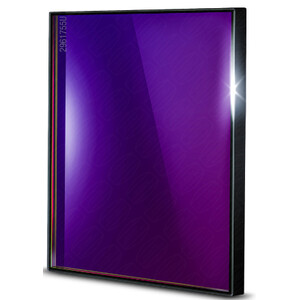Pass filters block out the visible light and allow only long-wave infrared (IR) or short-wave UV light.
IR pass filters are popular in planetary photography, as the seeing conditions due to the terrestrial atmosphere are not so problematic in the long wavelength range. This will hence result in a sharper image than in visible light as long as the camera sensor is sensitive to this long wavelength range.
Pass filters allow only light of a certain wavelength range to pass through. This bandpass range for astrometric filters is very precisely defined. Unlike line filters, the bandpass range is much wider and not matched to a specific spectral line. The aim of an astrometric pass filter is not to suppress light pollution, such filters can be found under the CLS or UHC categories.
The term pass filter is also used to mean filters that allow long-wave infrared (IR) or short-wave UV light to pass through, but not the light visible to the eye. IR pass filters are popular in planetary photography because the disturbance caused by the terrestrial atmosphere’s seeing is not so noticeable in the long-wave range. If the camera sensor is sensitive to this long-wave range, a sharper image is possible than in the visible wavelength range.
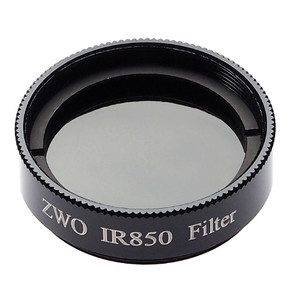
ZWO
Filters Filter IR-Pass 1,25"
$ 37.90

Baader
Filters SLOAN/SDSS (ugriz') Photometric 65x65mm
$ 2,610.00

Baader
Filters UBVRI Bessel 65x65mm
$ 1,590.00

Baader
Filters SLOAN/SDSS (ugriz') Photometric 2"
$ 1,500.00
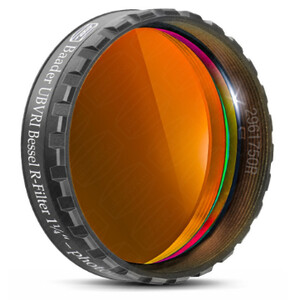
Baader
Filters UBVRI Bessel R 1.25"
$ 152.00
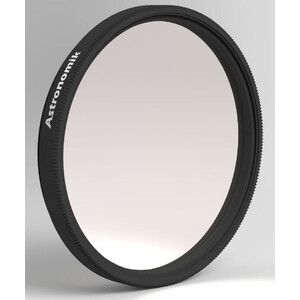
Astronomik
Filters ProPlanet 742 2" IR band-pass filter
$ 130.00

Baader
Filters SLOAN/SDSS (ugriz') Photometric 1.25"
$ 870.00
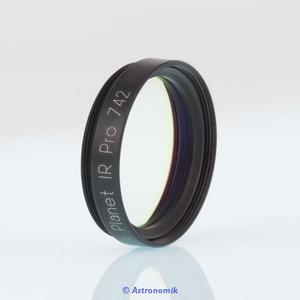
Astronomik
Filters Planet pro 1.25" IR 742 filter
$ 65.00

Baader
Filters UBVRI Bessel photometric SET 1.25"
$ 770.00
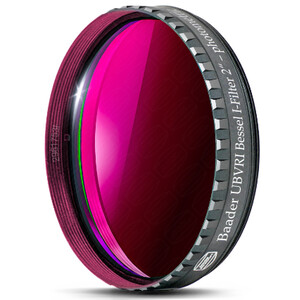
Baader
Filters UBVRI Bessel I 2"
$ 278.00
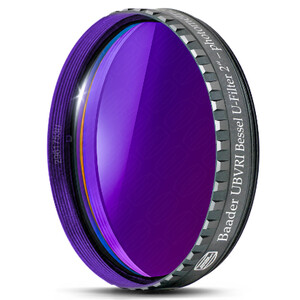
Baader
Filters UBVRI Bessel U 2"
$ 278.00
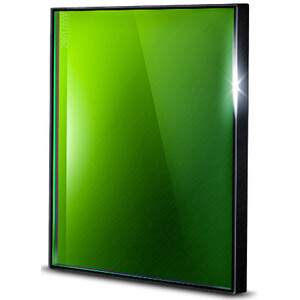
Baader
Filters UBVRI Bessel V 50x50mm
$ 263.00
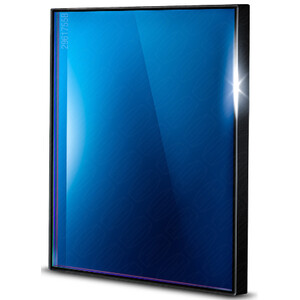
Baader
Filters UBVRI Bessel B 50x50mm
$ 262.00
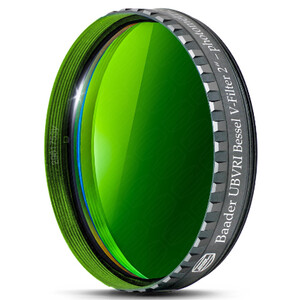
Baader
Filters UBVRI Bessel V 2"
$ 217.00
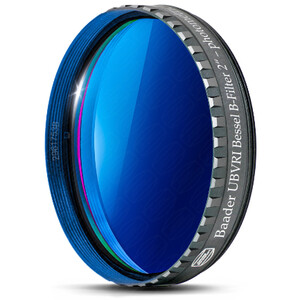
Baader
Filters UBVRI Bessel B 2"
$ 215.00
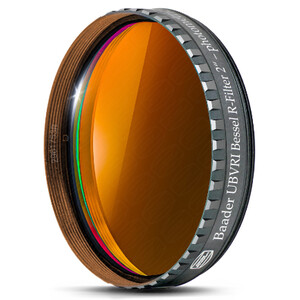
Baader
Filters UBVRI Bessel R 2"
$ 212.00
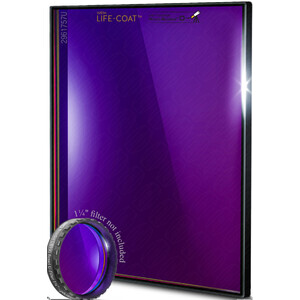
Baader
Filters UBVRI Bessel U 100x100mm
$ 790.00
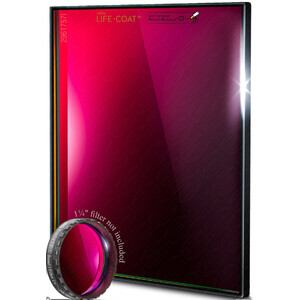
Baader
Filters UBVRI Bessel I 100x100mm
$ 780.00
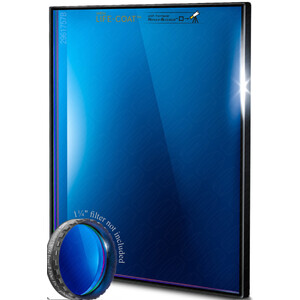
Baader
Filters UBVRI Bessel B 100x100mm
$ 740.00
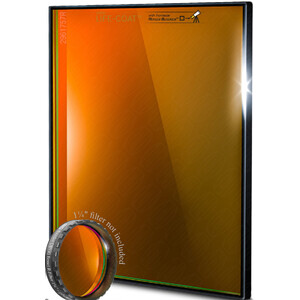
Baader
Filters UBVRI Bessel R 100x100mm
$ 740.00
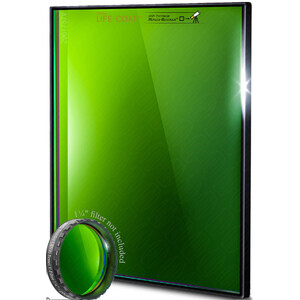
Baader
Filters UBVRI Bessel V 100x100mm
$ 740.00
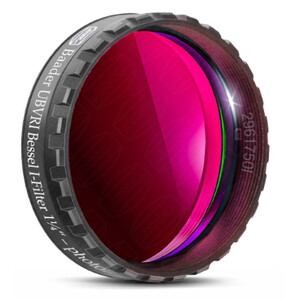
Baader
Filters UBVRI Bessel I 1.25"
$ 172.00
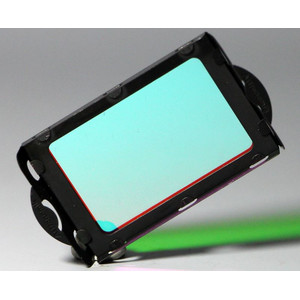
Astronomik
Filters ProPlanet 642 BP EOS XL Clip IR pass filter
$ 163.00
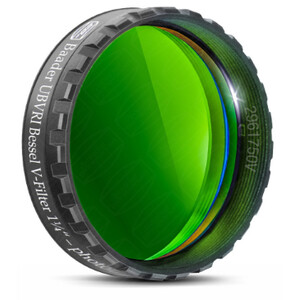
Baader
Filters UBVRI Bessel V 1.25"
$ 154.00
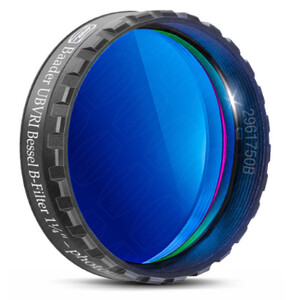
Baader
Filters UBVRI Bessel B 1.25"
$ 153.00
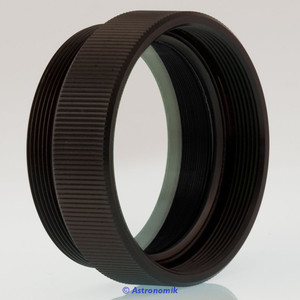
Astronomik
Filters ProPlanet 742 IR SC 2" band-pass filter
$ 152.00
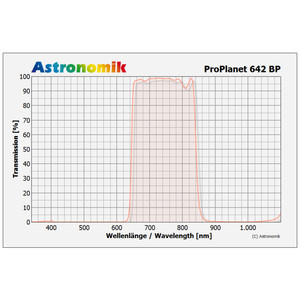
Astronomik
Filters ProPlanet 2" 642 BP IR pass filter
$ 152.00
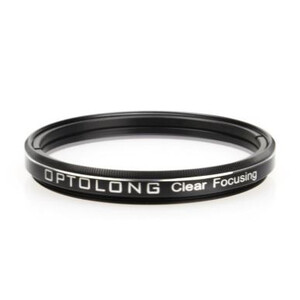
Optolong
Filters Clear Focusing 2"
$ 76.00
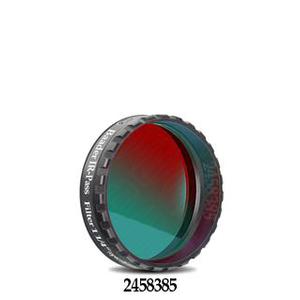
Baader
Filters 1 ¼ ' IR - passport filter (685 Nm) (flat-optically polished)
$ 98.00
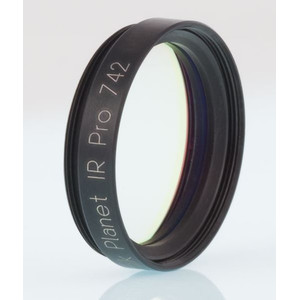
Astronomik
Filters ProPlanet 642 BP 1.25" IR pass filter
$ 86.00
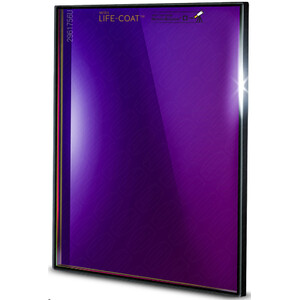
Baader
Filters UBVRI Bessel U 65x65mm
$ 365.00
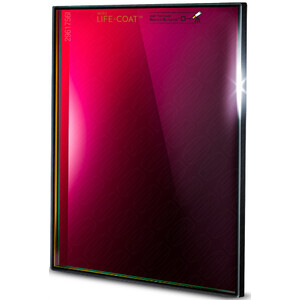
Baader
Filters UBVRI Bessel I 65x65mm
$ 365.00
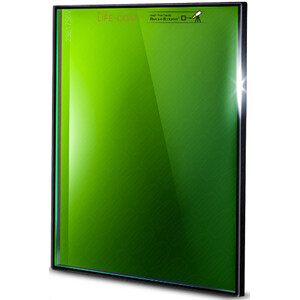
Baader
Filters UBVRI Bessel V 65x65mm
$ 319.00
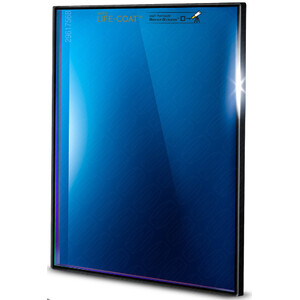
Baader
Filters UBVRI Bessel B 65x65mm
$ 317.00
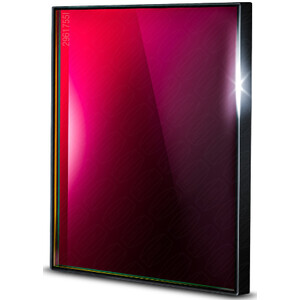
Baader
Filters UBVRI Bessel I 50x50mm
$ 312.00
